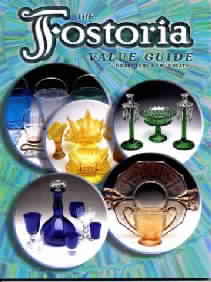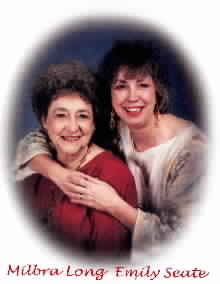 |
 |
 |
|
|
|
 |
 |
 |
| The first presentation of the project was a volume on Fostoria Stemware published by Collector Books. This volume featured computer generated illustrations , hand drawn by a graphic artist. This user-friendly guide has proven itself to be a definitive handbook for the novice as well as the expert, not only for pricing values, but for identification purposes. |
| |
| The following two volumes focused on the Tablewares by Fostoria , giving the reader a vast amount of information, along with accurate documentation to excite the student of glassware. The fourth volume, dedicated to Useful and Ornamental Fostoria offerings, gave the glass collector a much needed resource for items rarely covered in other publications. |
|
| Now, with great delight, my task is to present to the reader an assessment of the latest volume on Fostoria by Long and Seate. Perhaps one of the moving elements of this scenario is that at an age when many are perched in a recliner watching the world pass by, Milbra is still attending to her passion for glass. A deep commitment was needed to achieve this latest addition to the legacy: a commitment to the task and a commitment to combining the efforts of both authors for this long term work. |
|
| The Fostoria Value Guide is a compilation of all the items listed in the first four volumes, plus additional information not previously presented. In this volume, an up-dated price guide is presented as well. For the first time, collectors and dealers can have an unusually extensive resource on Fostoria in one handy book. The alphabetical listings contain dates of production, colors produced, etching and cutting references, and sizes plus a ready reference to the more comprehensive material in each of the original volumes. A feature of this volume is the presentation of all pieces of a pattern, whereas, in the previous volumes , the reader would need to refer to both stemware and tableware volumes. Although the original volumes present larger detailed drawings, color photo presentations, and historical data of patterns for the student of glass, the newest volume does present a sketch or photo with each pattern listing for easy identification. This is a practical-sized reference which can easily accompany the Fostoria lover on shopping sprees. |
|
| Pricing is difficult for any author in todays market. Many prices did not escalate a lot, while some remained the same due to no increase in interest by the collecting public. In my personal usage of all the previous volumes, I have found that the prices more reasonably reflected the actual market than some price guides, although the prices on some items may have been higher. The reader must always remember when using a price guide that prices are based on many factors. All of these factors are subject to change, especially considering the time frame needed to produce such a comprehensive volume. |
|
| The overwhelming reason for my love of all the previous volumes in addition to the latest price guide is the accessibility of so much wonderful inclusive information on the wares of Fostoria Glass Company. An example of this feature is the section on Fostoria tumblers which appears alphabetically in the listings. Also, my passion for research drew me to the section of pages which will be new to Long-Seate readers. These pages appear at the end of the book with photos, catalog pages and advertisement pages. I would be remiss in my presentation to fail to mention the absolutely stunning cover by Beth Summers. Not only does the front cover feature exquisite glassware, but the background colors are pleasing to my eye. |
|
| In my opinion, the work of Milbra and Emily is by far, to date, the most comprehensive work on Fostoria glassware. Though presented in a scholarly manner, all five volumes have proved to be user-friendly. I predict with a great measure of certainly that after using the newest volume for a few weeks, my praise will be even greater as I comprehend more deeply the vast work that I hold in my hands. It can be easily presumed that the work of Milbra Long and Emily Seate will profoundly affect the sphere of glass-collecting for generations to come. Accolades are clearly deserved for the time, effort and expertise of these gracious ladies. As for this writer, my thanks and appreciation are presented as my tribute for a job well done. |
|
| HOME |
 |
|

